Table of Contents
The Seven Wonders of the World represent the pinnacle of human creativity, engineering, and architectural brilliance. From the ancient marvels of the Old World to the globally recognized New Wonders, these structures captivate imaginations and inspire millions. In this article, we’ll explore the original Seven Wonders of the World, as well as the modern additions, including the newly crowned 8th Wonder, Angkor Wat.
7 Wonders of the World
The ancient wonders were globally recognized for their architectural brilliance, artistic beauty, and the sheer scale of the engineering required to build them. Unfortunately, except for the Great Pyramid of Giza, all the other original wonders have been lost to time, largely destroyed by natural disasters or human actions. The Seven Ancient Wonders included:
- Great Pyramid of Giza – Egypt
- Hanging Gardens of Babylon – Ancient Mesopotamia (modern-day Iraq)
- Statue of Zeus at Olympia – Greece
- Temple of Artemis at Ephesus – Turkey
- Mausoleum at Halicarnassus – Turkey
- Colossus of Rhodes – Greece
- Lighthouse of Alexandria – Egypt
These wonders were renowned for their grandeur and the feats of engineering they represented. Sadly, except for the Great Pyramid of Giza, all have been destroyed by natural disasters or human actions.
8th Wonder of The World: Angkor Wat
Angkor Wat in Cambodia has been named the 8th Wonder of the World. Angkor Wat is the largest religious structure in the world and a UNESCO World Heritage Site. The temple was built in the 12th century by King Suryavarman II.
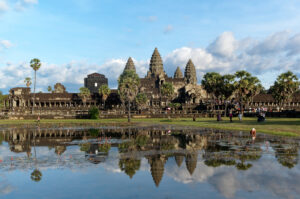
The title of “Eighth Wonder of the World” is also given to other remarkable new buildings, projects, or designs. Some other candidates for the 8th Wonder of the World include:
- Mitre Peak in Milford Sound, New Zealand
- Deadvlei Clay Pan in Namibia
- Torres del Paine National Park in Chile
- The rock-hewn churches of Lalibela in Ethiopia
- Stonehenge in England
Original 7 Wonders of the World
- Great Pyramid of Giza – Egypt
- Hanging Gardens of Babylon – Ancient Mesopotamia (modern-day Iraq)
- Statue of Zeus at Olympia – Greece
- Temple of Artemis at Ephesus – Turkey
- Mausoleum at Halicarnassus – Turkey
- Colossus of Rhodes – Greece
- Lighthouse of Alexandria – Egypt
New 7 Wonders of the World
Here is a list of seven wonders of the world of some of the most impressive buildings, including the
| Name of Wonders | Place |
| Chichen Itza | Mexico |
| Colosseum | Italy |
| Christ the Redeemer | Brazil |
| Great Wall of China | China |
| Machu Pichu | Peru |
| Petra | Jordan |
| Taj Mahal | India |
In 2000, the Swiss Foundation started the campaign for selecting the New Seven Wonders. The announcement for the new Seven Wonders was in 2007, and the whole list was made public.
List of 7 Wonders of the World
Here is the Name the seven wonders of the world given below with Place and Description:
| 7 Wonders of the World | Place | Description |
| The Colosseum | Rome, Italy |
|
| Machu Picchu | Cuzco Region, Peru |
|
| Petra | Ma’an, Jordan |
|
| Taj Mahal | Agra, India |
|
| Cristo Redentor (OR) Christ the Redeemer Statue | Rio de Janeiro, Brazil |
|
| Great Wall of China | China |
|
| Chichén Itzá | Yucatán, Mexico |
|
New Seven Wonders of World in Detail
Seven Wonders of the Modern World is a list of landmarks selected through a global poll conducted by the New 7 Wonders Foundation. The list was announced on July 7, 2007. These landmarks were chosen based on their cultural and historical significance, as well as their architectural marvel. The New 7 Wonders Foundation aimed to create a new list of wonders representing the modern world’s most impressive achievements. Here are the New 7 Wonders of the World with descriptions and their images:
1. The Colosseum
The Flavian Amphitheatre, usually called the Colosseum or Coliseum, is a spectacular amphitheatre constructed in Rome and inaugurated in AD. 80 by Titus, the son of Vespasian, for a hundred days of games that included gladiatorial battles and animal contests. It is one of the 7 Wonders of the World. Even though two-thirds of the original structure has been damaged over time, it is one of the most well-known tourist locations.
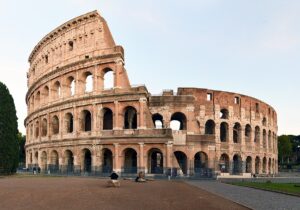
| The Colosseum | |
| Situated in | Rome |
| Country | Italy |
| Built in | commissioned around A.D. 70-72 |
| Built by | Emperor Vespasian of the Flavian dynasty |
2. Machu Picchu
An Incan site in Peru called Machu Picchu was “found” by Hiram Bingham in 1911. It is one of the 7 Wonders of the World. It is close to the city of Cuzco. Vilcabamba, a covert Incan bastion used during the 16th-century revolt against Spanish domination, was what he thought it to be. It is one of the few recognized immense pre-Columbian ruins found almost intact.
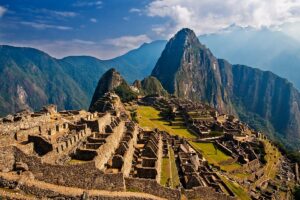
| Machu Picchu | |
| Situated in | Cusco Region, Urubamba Province, Machupicchu District |
| Country | Republic of Peru |
| Built in | Construction is believed to be started in 1450–1460 |
| Built by | Incan Empire |
3. Petra
Petra is a remarkable historical and archaeological city in southern Jordan. It is also known as Raqmu or Rose City due to its color. It is one of the 7 Wonders of the World. The Nabataean, a Bedouin Arab tribe that was native to the area in what is now southwest Jordan, is thought to have founded the city of Petra as a trade center. Petra is situated around 150 miles south of Jerusalem and Amman, the capital of Jordan, and roughly halfway between Damascus, Syria, and the Red Sea, making it a center of commerce in the region at the time.
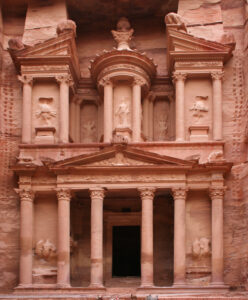
| Petra | |
| Situated in | Ma’an Governorate |
| Country | Jordan |
| Built in | 5th century BC |
| Built by | The Nabataean |
4. Taj Mahal
Agra, India’s Taj Mahal, is a marble mausoleum complex and one of the best examples of Mughal architecture. Shah Jahan (reigned 1628–58) built it in memory of his wife Mumtaz (Arjumand Banu Begum), known as “Chosen One of the Palace,” who passed away in 1631 while giving birth to their 14th child. It is one of the New 7 Wonder of the World. It is thought that 20,000 artisans worked on the Taj Mahal project under the direction of a board of architects who were knowledgeable at the time. 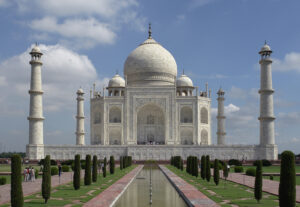
| Taj Mahal | |
| Situated in | Agra, Uttar Pradesh |
| Country | India |
| Built-in | 1632–53 |
| Built by | Emperor Shah Jahān |
5. Cristo Redentor (OR) Christ the Redeemer Statue
On Mount Corcovado in Rio de Janeiro, the Christ the Redeemer Statue, also known as Cristo Redentor, is a statue of Jesus in the Art Deco style. Heitor da Silva Costa designed the 130-foot statue made of reinforced concrete and soapstone. Its construction cost about $250,000, most of which was obtained through contributions. It is 635 tonnes in weight and is situated on the Peak of Corcovado Mountain in the Tijuca Forest National Park, which provides views of Rio de Janeiro. 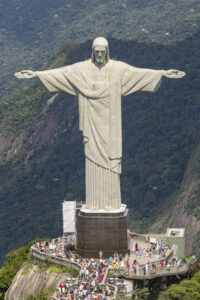
| Christ the Redeemer Statue | |
| Situated in | Corcovado mountain, Rio de Janeiro |
| Country | Brazil |
| Built-in | 1922 – 31 |
| Built by | Designed by sculptor Paul Landowski and built by engineer Heitor da Silva Costa in collaboration with Albert Caquot. Sculptor Gheorghe Leonida created the face |
6. Great Wall of China
The Great Wall of China is a work of engineering that is believed to be roughly 5,500 miles (8,850 km) long; however, the Chinese claim it is 13,170 kilometres long (21,200 km). The Great Wall of China was built throughout two millennia, starting in the 7th century BCE. The goals of this spectacular organization at the time included management of trade and emigration, border control, imposition of tariffs on Silk Road trade, and defence.
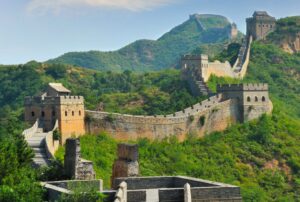
| Great Wall of China | |
| Situated in | Stretches across North China from east to west |
| Country | China |
| Built-in | Construction started in the 7th century BC |
| Built by | Qin Dynasty, Ming dynasty |
7. Chichén Itzá
A Mayan metropolis in Mexico is called Chichen Itza. It is located on the Yucatán Peninsula, which had great prosperity in the ninth and tenth centuries A.D. The mythological great cities, or Tollans, mentioned in later Mesoamerican literature are also thought to include Chichen Itza. The city’s ruins contain religious structures from the Maya Civilization, such as the Temple of Kukulkán, which has 365 steps, one for each day of the Haab solar calendar.
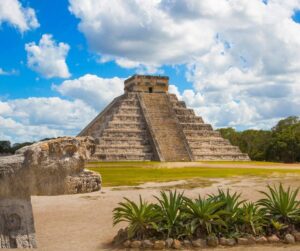
| Chichén Itzá | |
| Situated in | Yucatán |
| Country | Mexico |
| Built-in | 5th-13th century |
| Built by | Maya-Toltec civilization |
How were the Seven Wonders of the World Chosen?
The Seven Wonders of the World were initially listed by Greek historian Herodotus in the 5th century BC. He created this list based on the most impressive structures he had seen during his travels worldwide. The new list of Seven Wonders of the World, however, was compiled in 2007 through a global vote.
Millions of people worldwide voted for their favourite wonders, and the top seven vote-getters were included on the list. There are no specific criteria for being named a Seven Wonder of the World. However, the wonders are generally chosen based on their architectural and engineering significance, historical importance, beauty, and aesthetic appeal.

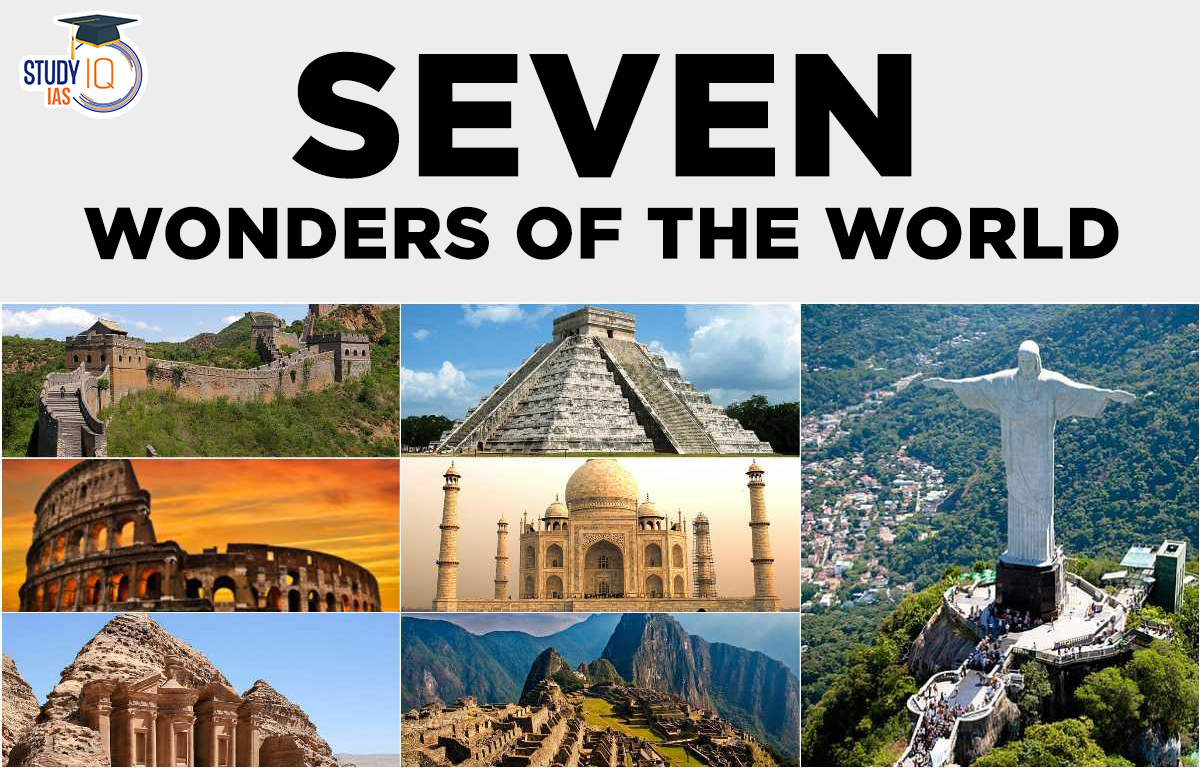
 International Days List of 2025, Importa...
International Days List of 2025, Importa...
 Major Dhyan Chand Khel Ratna Award Winne...
Major Dhyan Chand Khel Ratna Award Winne...
 Mahavir Jayanti 2025: Date, History, Sig...
Mahavir Jayanti 2025: Date, History, Sig...





















